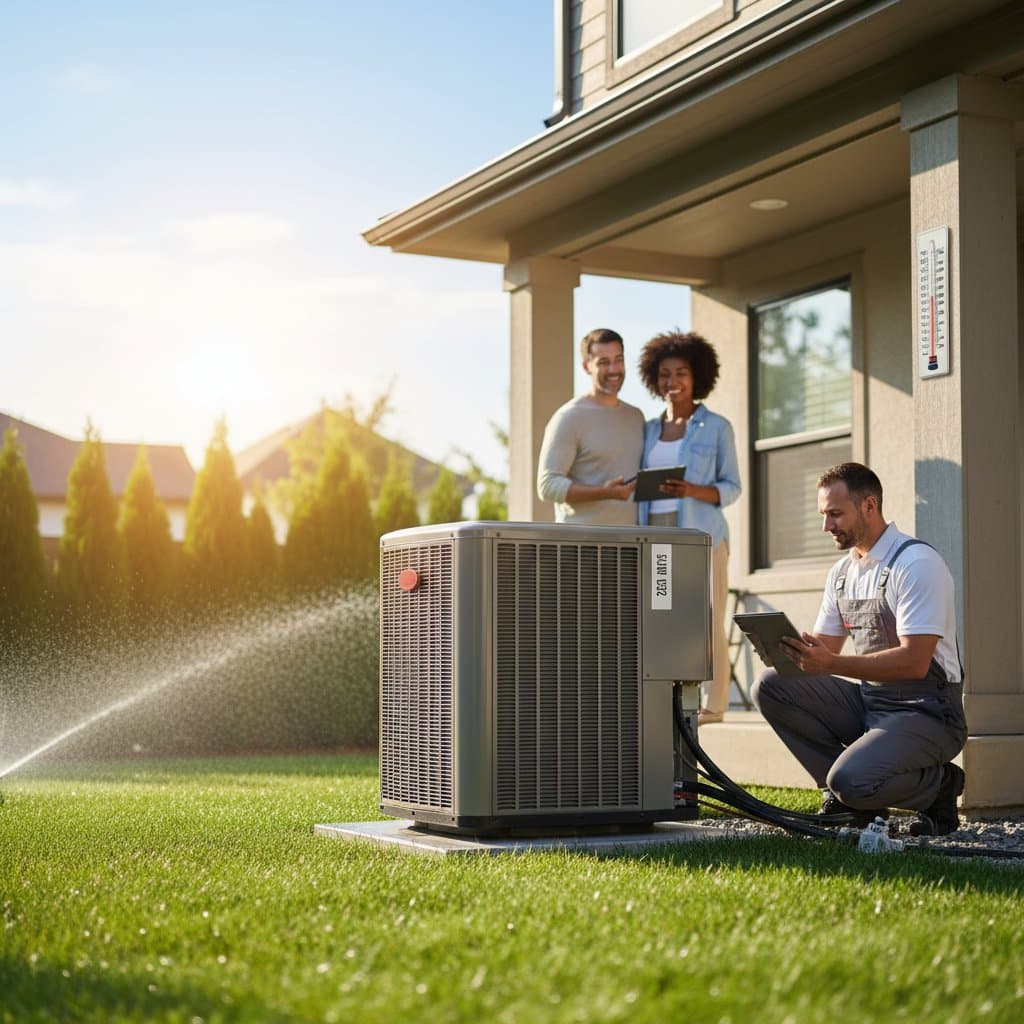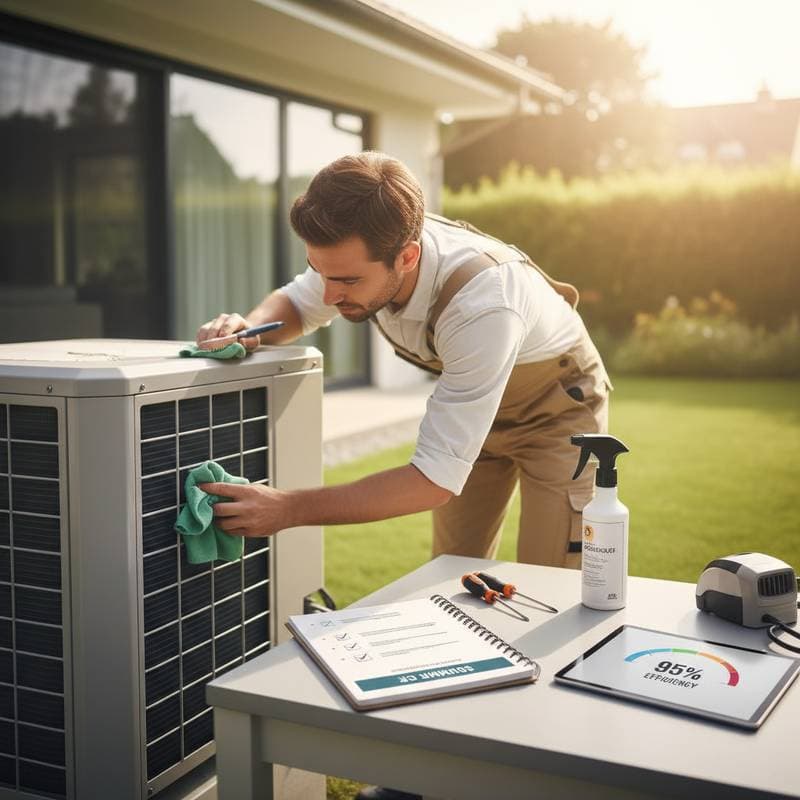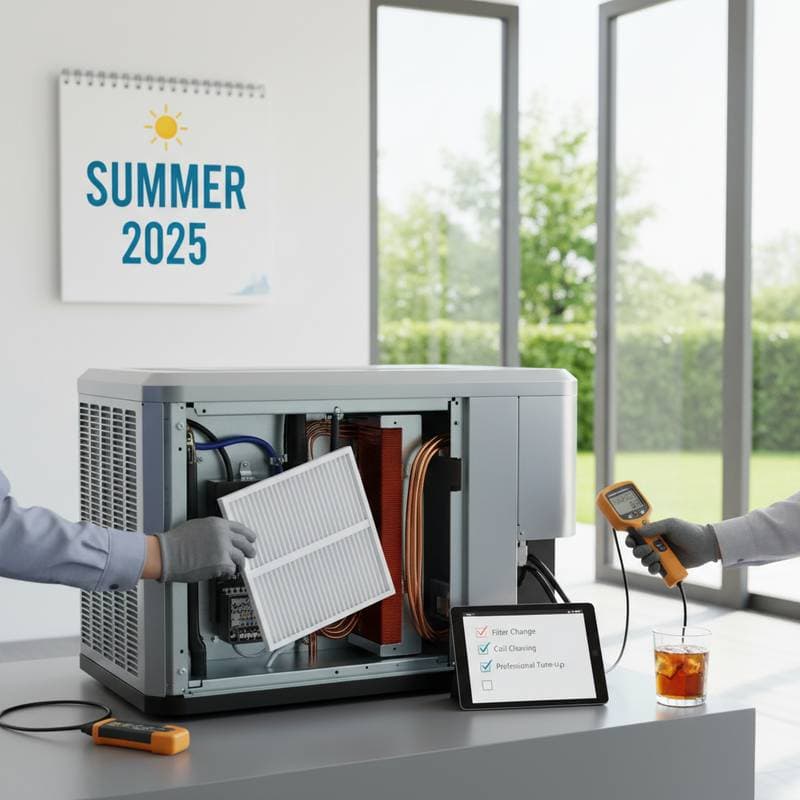Preparing Your Air Conditioner to Avoid Costly Summer Breakdowns
Summer heat arrives with intensity, and a reliable air conditioner becomes essential for comfort. Many homeowners face unexpected breakdowns when temperatures rise, leading to high repair costs and discomfort. Early preparation ensures the system operates efficiently and avoids these issues.
Proper maintenance extends the lifespan of the unit and reduces energy consumption. This guide covers the reasons for proactive care, detailed steps for preparation, options for DIY and professional services, cost considerations, and tips for safety and efficiency. Homeowners gain practical knowledge to maintain a cool home throughout the season.
Why Early AC Maintenance Matters
Air conditioners endure heavy use during summer months, straining components like compressors and coils. Neglect leads to reduced performance, higher utility bills, and sudden failures. Statistics indicate that systems without regular upkeep fail up to 50 percent more often during peak heat.
Preparation identifies minor issues before they escalate. For instance, dirty filters restrict airflow, causing the unit to overwork and potentially overheat. Addressing these problems early prevents costly emergencies and preserves indoor air quality.
Timely action aligns with seasonal changes. As spring transitions to summer, schedules allow for thorough inspections without the pressure of sweltering days. This approach saves time and money while ensuring consistent cooling.
Essential Steps for AC Preparation
Begin with a visual inspection of the outdoor unit. Clear debris such as leaves, dirt, and grass clippings from the area around the condenser to promote proper airflow. Ensure the unit sits level on a stable base to avoid vibrations that damage internal parts.
Next, examine the indoor components. Check the evaporator coils for dust accumulation, which impedes heat absorption. Use a soft brush or vacuum to gently remove surface dirt, but avoid bending the fins.
Test the thermostat functionality. Set it to cool mode and verify that the system activates promptly. Adjust settings if necessary to optimize performance based on home size and insulation levels.
DIY Maintenance Options
Homeowners with basic skills can handle several tasks independently. Start by replacing or cleaning the air filter, a simple process that improves efficiency by 15 percent. Select filters with a MERV rating of 8 to 13 for balanced filtration without restricting flow.
Inspect ductwork for leaks using a flashlight and soapy water test on joints. Seal small gaps with mastic tape or foil-backed duct tape to prevent cool air loss. These efforts reduce strain on the system and lower energy use.
Monitor refrigerant levels indirectly through performance. If cooling weakens, low refrigerant may indicate a leak, requiring professional attention. DIY limits apply here to avoid handling hazardous materials.
Professional Tune-Up Services
Experts recommend annual professional servicing for comprehensive care. Technicians use specialized tools to measure refrigerant pressure, clean coils deeply, and lubricate moving parts. This service detects electrical issues and worn components early.
Compare service providers by certifications, such as NATE or EPA credentials, which ensure quality work. Schedule appointments in early spring to avoid summer rushes and secure better rates. Professional intervention often includes a warranty on repairs.
Benefits extend beyond immediate fixes. Regular pro tune-ups can extend system life by five years or more, providing long-term value. Homeowners receive detailed reports on system health for informed decisions.
Understanding Maintenance Costs
DIY efforts keep expenses low, often under 50 dollars for filters and basic supplies. Time investment equals savings, with tasks taking one to two hours. This option suits budget-conscious individuals comfortable with hands-on work.
Professional services range from 75 to 200 dollars per visit, depending on location and system complexity. Additional fees apply for refrigerant recharges or part replacements, potentially adding 100 to 500 dollars. Factor in these costs against potential breakdown expenses, which average 300 to 1000 dollars.
Investing in maintenance yields returns through efficiency gains. A well-maintained unit uses 10 to 20 percent less energy, translating to annual savings of 50 to 150 dollars on bills. Evaluate options based on system age and usage patterns.
Safety and Efficiency Tips
Prioritize safety during any maintenance. Turn off power at the breaker before touching electrical components to prevent shocks. Wear protective gear like gloves and goggles when handling coils or filters.
Enhance efficiency with smart practices. Set the thermostat to 78 degrees Fahrenheit when home and higher when away to balance comfort and savings. Use ceiling fans to circulate air, allowing higher thermostat settings without sacrificing coolness.
Insulate attics and seal windows to minimize heat gain. Programmable thermostats automate adjustments, optimizing runtime. These habits complement mechanical maintenance for peak performance.
Maximizing Long-Term Comfort and Savings
Consistent preparation transforms summer cooling from a worry to a reliability. Homeowners who follow these steps enjoy uninterrupted comfort and lower costs. Systems perform at their best, supporting health and well-being in hot weather.
Review maintenance annually to adapt to changing needs. Track performance metrics like runtime and bills to gauge effectiveness. This proactive stance ensures readiness for future seasons.





